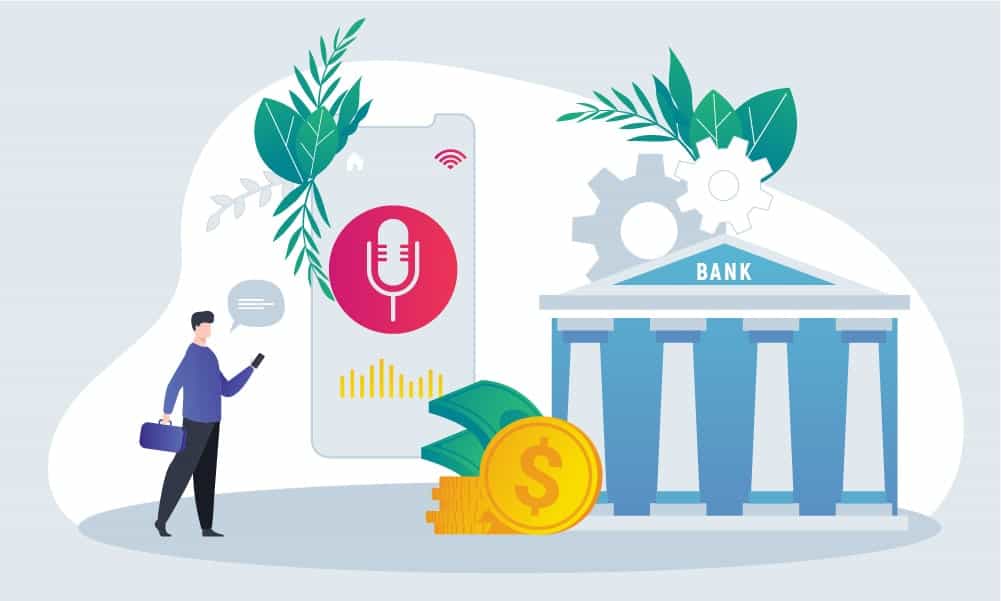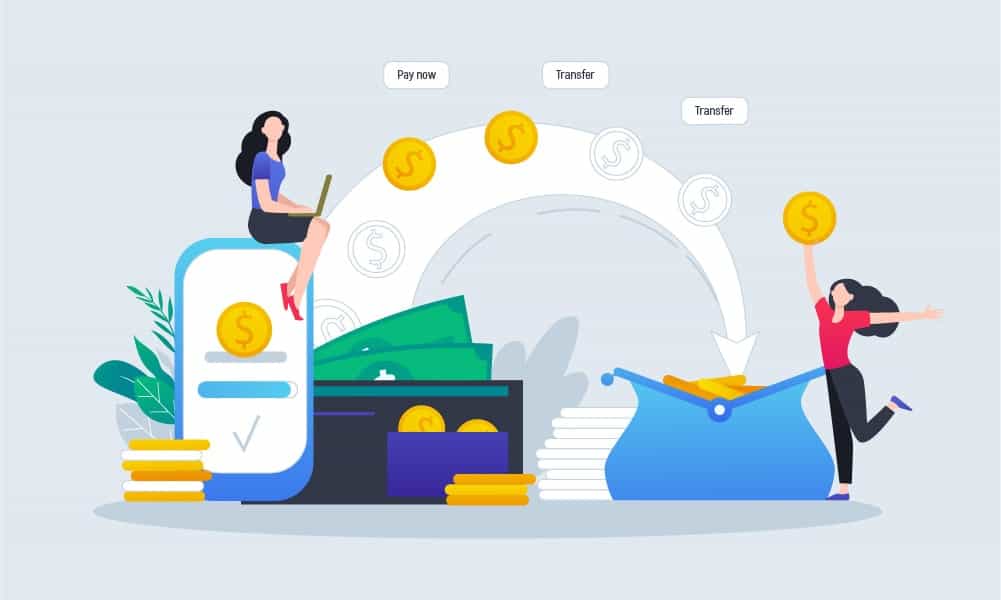Today, companies have to come up with approaches to surprise their clients and offer a good customer experience. No one will be surprised by the usual mobile apps or bot advisors, so why not try gamification? It has already gained ground in many industries, from education to healthcare. But have you ever heard about gamification in banking? It’s a relatively new approach to providing banking services, so people are still quite skeptical about it.
In the article we will explain how to use gamification in banking, the benefits it may bring to the industry, challenges, and principles of gamification in finance and banking.
- Gamification in Business Environment: What is It and How Can It be Applied?
- What is gamification?
- Top gamification features for digital banking
- How Does Gamification Enhance the Banking Industry?
- Benefits of Gamification for the Banking and Financial Sectors
- New clients
- Enhanced customer engagement
- Awareness of new services and products
- Valuable data
- Digital transformation
- Financial literacy
- Practical Examples of Gamification in Banking
- Accomplished strategy
- Better service experience
- Winning competition
- Client's loyalty
- Customer insights
- Edutainment
- Final Thoughts
Today, companies have to come up with approaches to surprise their clients and offer a good customer experience. No one will be surprised by the usual mobile apps or bot advisors, so why not try gamification? It has already gained ground in many industries, from education to healthcare. But have you ever heard about gamification in banking? It’s a relatively new approach to providing banking services, so people are still quite skeptical about it. In the article we will explain how to use gamification in banking, the benefits it may bring to the industry, challenges, and principles of gamification in finance and banking.
Gamification in Business Environment: What is It and How Can It be Applied?
Statistics state that gamification as an approach is a serious multi-billion-dollar business. Some companies have already tried on game mechanics such as quests, ratings, and levels to achieve various internal and external purposes to attract new customers. According to the statistics, the gamification market worldwide reached $12 in 2021 compared to $4.91 billion U.S. in 2016. And is set to rise over $30 billion by 2025. Companies invest in gamification solutions to:
- Engage new clients
- Increase their loyalty
- Train employees
- Promote personal development
- Manage innovation
What is gamification?
Gamification is the process of using game psychology in a non-game environment. For users’ active participation, you can reward thus, improve app engagement and get valuable data-driven insights.
There are some challenges financial institutions face before implementing gamification in their services. One of them is the stereotype that games are only for kids. However, different types of games accompany us throughout our whole life, thus banks can easily satisfy even the most demanding, tech-savvy group of customers – millennials.
Another challenge is that clients that are taking the banking app and their savings very seriously may feel cautious about games in it. Thus banks must carefully decide which elements will be gamified and keep in mind security and account privacy.
Top gamification features for digital banking
- Points are mechanisms for users to signify an accomplishment or an upgrade during their game They measure and reward progress.
- Levels also show progress and achievement. They visualize where users are at in their journey and what they have yet to achieve.
- Leaderboards provide visual recognition to encourage progression.
- Badges are a great visual tool that also recognizes users’ achievements.
- Progress Charts bring a competition element to the game, thus keeping users engaged and motivated.
- Quests are another common feature in games. enhance feelings of success and achievement. This can be implemented by connecting several smaller challenges to a wider agenda.
- Polls are an additional way to collect users’ data and allow and understand their needs and expectations.
- A lottery is a common game element that engages users and doesn’t require lots of effort.
How Does Gamification Enhance the Banking Industry?
Banking activities are not fun but serious matters for the majority of people. Banks want to come up with new approaches to offer fun experiences that will motivate customers to spend more time online and buy more. Thus, institutions strive to apply gamification in banking services to get compelling tools for influencing the decision-making process, enhancing customer engagement, making changes in operations and some corporate processes, and motivating customers and employees.
The idea of gamification doesn’t mean literally turning a banking app into a game. Rather strengthen traditional methods with game elements. That is especially important for digital-only banks that have limited channels of communication with their customers.
Usually, gamification in the banking industry impacts the following spheres: sales, marketing, innovation, and talent management. Banks launch web or mobile applications that in the form of a challenge teach users how to pay taxes and or conduct online transactions. App users get points and later can exchange them for different services offered by a bank:
- cashback
- upgrade
- participation in online auctions
- exclusive services
Benefits of Gamification for the Banking and Financial Sectors
Gamification of finance institutions brings numerous benefits both for the banks and their clients from customer engagement in banking and winning their loyalty to attracting more investments into your organization. Here is our list of benefits:
New clients
Gamification is one of the modern communication methods and interaction with potential customers. Attracting them with a top-notch banking app that will offer more fun than just traditional features with numbers and stats, is a smart decision.
Enhanced customer engagement
The game solution makes clients spend more time using the mobile banking app and interact with the bank’s services.
Awareness of new services and products
Forget about straightforward advertising. With the help of games, banks got a chance to promote and quickly spread information among their customers about their latest updates and services.
Valuable data
Digital solutions allow you to analyze data about current bank clients and gather valuable insights into their behavior. Thus, it may help your team create strategies for future development and improvements.
Digital transformation
Today it’s crucial for banks to keep up with fintech trends. Game solutions can serve as a starting point for the digital transformation process for every stakeholder: the bank’s board, management, employees, and customers.
Financial literacy
People don’t always understand questions related to their finances: debt, investments, inflation. With gamification in digital banking, you can raise awareness about financial topics, simplify the understanding of banking operations, and enhances customers’ financial literacy. In fact, quizzes and actual games can be used to elaborate on a topic. So customers can make smarter decisions about their bank accounts.
Gamification helps financial institutions to:
- Motivate employees
- Improve regulatory compliance
- Boost innovations
- Provide outstanding customer service
- Reach personal development goals
- Hit targets and sell services
- Track performance
- Adopt digital transformation
Check out how you can benefit from banking development services
Practical Examples of Gamification in Banking
There are numerous ways to incorporate game elements into your financial app. As we’ve already discovered a theory and benefits, here are some best practices of gamification in the banking sector.
Accomplished strategy
One of the challenges in the banking industry is to acquire a trustworthy borrower. However, with a new approach, banks are using gamification in banking apps to motivate people to open deposit accounts and use credit cards. Also, financial institutions can target clients according to their specific needs. Barclaycard US created a social community of cardholders by launching Barclays Ring, a social credit card. Game techniques make card-related activities more engaging: e.g. community members share their ideas for credit card features.
Better service experience
Gamification of banking services helps gain loyalty among customers. Financial operations may be enjoyable with well-designed and implemented game elements. Users play and win something (e.g. a higher deposit rate or a home appliance), so the next time they need a loan, that particular bank will be the first place they think of. Games can also help customers control how much they spend, show their spending patterns, and highlight how much they need to save to meet their financial goals.
To drive customer loyalty, the digital-focused Spanish bank, BBVA launched a BBVA Game\ — a web app that teaches how to make banking transactions and offers mobile banking app tutorials, and explanations of how to pay taxes online. Clients complete tasks, thus earn points and spend them either to stream movies and download music or tickets to the theater.
Winning competition
Today a modern bank that is oriented toward tech-savvy clients will definitely overcome competitors. Let’s take a look at a Ukrainian digital (only) bank Monobank that employs various innovative techniques to deliver services to its customers. What’s more, they have an intuitive, highly visualized mobile app with hidden mini-games and some activities that can be awarded financially.
Client’s loyalty
British multinational banking and financial services company Standard Chartered offered its clients to win surprise cashback for transactions made with their credit cards. Twist & Win is a game integrated into the bank’s mobile app. It encourages users to use their credit cards and after every transaction, there is a possibility to win a cashback.
Another example is a free online piggy bank called Smarty Pig was created to make the saving process fun. Users fill in their financial goals, set automatic transfers from their main bank account to their chosen goal, and can observe the progress bar.
Customer insights
When people are entertained, they are more willing to share personal data. Gamification may provide valuable user information: the number of active users, their level of interest in banking services, saving methods, and what goals they’re pursuing. In this way, banks not only can analyze their clients better but also come up with efficient strategies and business approaches. The Moven bank encourages clients to try their gamified system CRED which keeps an eye on how users pay bills, shift money, and help with daily financial decisions.
Edutainment
As we mentioned before gamification of banking services can play a significant role in motivating and educating financial literacy among clients. Educated consumers have a practical approach to their finances and make smarter financial moves. A web-based financial services company PayPerks through a mix of visual effects, rewards system, and game elements improves the financial literacy and well-being of low- and moderate-income users.
What our mobile app development services can offer you? Find out!
Final Thoughts
Gamification of financial services isn’t just about collecting coins and taking a quiz. Its value is in analytical data, an expanded client base, and an attractive image of a financial institution. However, businesses are investing in digital solutions for a reason: to keep up with client’s demands, automate their operations, enhance customer engagement, and of course, survive the competition. We, at Inoxoft, help fintech institutions empower their workforces with custom fintech development services and innovative solutions. Get in touch with us and find out more about ways you can apply best practices of gamification in banking and how to start benefiting from this idea today!
Frequently Asked Questions
What are the benefits of gamification in financial services?
With game elements, banks can
- attract new customers
- enhance customer engagement
- bring awareness of new services and products
- promote financial literacy
- extract valuable data
- perform digital transformation
What is the concept of gamification in banking and finance?
Gamification is the process of using game elements in a non-game environment. For users' active participation, you can reward thus, improve app engagement and get valuable data-driven insights.
Financial institutions strive to apply gamification in banking services to get compelling tools for influencing the decision-making process, enhancing customer engagement, making changes in operations and some corporate processes, and motivating customers and employees.










